Hybrids are in a weird spot right now.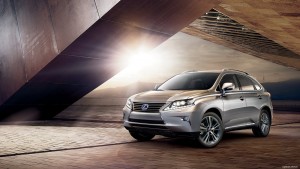
They’ve gotten very good – so good that many of them are now a nearly no-compromises (functionally) alternative to their conventional (gas engine-only) counterparts.
They’re quick, the don’t make weird noises – and (excepting the Prius) they don’t look weird, either.
But then, gas is cheap again.
Under $2 a gallon in my area.
Meanwhile, hybrids are still expensive.
This 2015 Lexus RX450h, for instance.
Its sticker price – $47,620 – is $7,550 higher than the base price of the otherwise basically identical (except for the hybrid gear) RX350, which lists for $40,070 to start.
The hybrid version of the RX does give you much better fuel-efficiency: 32 city, 28 highway for the FWD version; 30/ 28 with AWD – vs. 18 city, 25 highway with FWD; 18/24 with AWD for the non-hybrid RX.
But is a difference of even 14 MPG – the RX450’s advantage in city driving, where it can make the most of its ability to run on battery power alone or at least, partially – enough to offset that $7,550 difference up front when a gallon of gas costs $1.89?
Almost $8k buys a helluva lot of gas.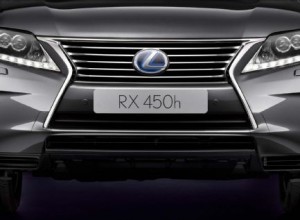
How much gas? About 3,800 gallons at today’s prices.
You’ll be driving for a long time before you run dry… or rather, break even.
And therein lies the rub.
WHAT IT IS
The RX450h is the hybridized version of the hugely popular Lexus RX – which is a mid-sized, two-row luxury crossover SUV.
The hybrid version uses electric motors and a battery pack to take some of the load off the gas-burning V6 – and to supplement the V6’s power output when maximum acceleration is needed. The tandem power source (V6 plus the electric motors) produce 295 hp vs. the V6-only RX’s 270 hp and achieves a class-best 32 city/28 highway vs. the V6-only RX’s 18 city/25 highway (FWD versions).
The RX hybrid doesn’t really have any direct competition.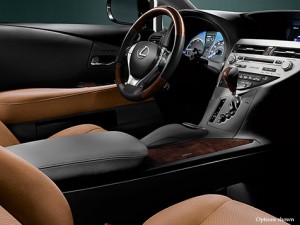
The Audi Q5, for example, is available in hybrid form – but it’s a smaller crossover. The Audi Q7 is available with a high-efficiency diesel. But it’s bigger – and more expensive($53,400) and not nearly as easy on fuel (19 city/28 highway).
The Porsche Cayenne hybrid ($78,195 to start) is much more so.
And, less so (20 city, 24 highway).
Base price for the FWD RX450h, on the other hand, is $47,620; with AWD, $49,020.
WHAT’S NEW FOR 2016
This will be the final year for the current RX – hybrid and standard-issue. A redesigned RX is on deck for the 2016 model year.
It should be available by early spring next year.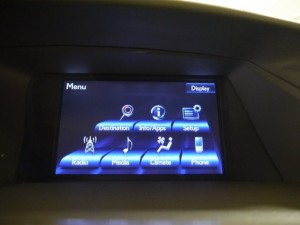
Meanwhile, the current RX soldiers on.
For its final year, the hybrid version comes standard with the formerly optional seven-inch LCD display in the center stack and the mouse-toggle input system has been redesigned for better ease-of-use – whether your right or left-handed.
WHAT’S GOOD
32 city is better than some cars manage on the highway.
28 on the highway is better than some cars do in the city.
Seamless transition from electric to gas and in-between.
Quick, quiet, smooth, elegant.
A not-bad deal… compared with sort-of rivals like the very quick but but very expensive (and very thirsty) Porsche Cayenne hybrid.
WHAT’S NOT SO GOOD
Cheap gas makes any hybrid seem pricey.
Non-hybrid RX is a bit quicker, just as quiet, smooth and elegant… and costs almost $8k less.
If you’re ok with something a little bigger – and more minivan-esque – the Infiniti QX60 hybrid (which has three rows) is a slightly less pricey alternative ($45,400 to start; $46,800 with AWD).
The RX450h has multiple motive sources – including two electric motors in the FWD version and three in the AWD version, plus a gas V6 and a battery pack. As in other hybrids, the system is designed to save gas by reducing vehicle’s reliance on the gas-burning engine, which can “go to sleep” at times, while the electric motors and battery pack take over.
The motors and battery pack also supplement the gas V6 when extra power is needed, as when accelerating to merge with traffic. This reduces the load on the V6, which reduces the amount of gas it requires.
Total output is 295 hp – 25 more hp than the V6-only, non-hybrid RX350.
But despite having more power on tap, the RX450h is slightly less quick (0-60 in about 7.5 seconds vs. about 7 flat for the regular RX) because it is much heavier: 4,652 pounds for the FWD model vs. 4,178 pounds for the FWD RX350, a difference of 474 pounds. About what a dressed small block Chevy V8 – or a medium-sized motorcycle – weighs. 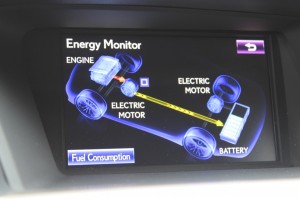
This is the Catch-22 of hybrids. In order to save gas, they need a motive source that doesn’t burn gas (the motors and battery pack). But the motors and battery packs add weight – which reduces performance.
Still, the RX450h delivers impressive – best in class – MPG numbers: 32 city, 28 highway for the FWD version and 30 city/28 highway for the AWD version. These figures easily beat the QX60 hybrid’s much-less-impressive 26 city, 28 highway (25 city/28 highway for the AWD version). The Infiniti is also much less quick. Probably because it weighs about the same as the RX450h – but instead of a powerful V6 it has a less-powerful (though supercharged) four, supplemented by a hybrid electric motor/battery pack.
With 250 hp (combined output) on tap, the QX hybrid needs about eight seconds to get to 60, a slow-ish time for a luxury crossover SUV.
The problem for both of them – for all of them – is that the price of fuel has dialed back to 1990s-era Good Times numbers. In real terms, gas is probably cheaper today than it was at the height of the Good Times, when people were buying Hummers like corn dogs at the county fair.
In my area, as I type (mid-September, 2015), you can buy a gallon of regular unleaded for $1.89 – literally half what it sold for about six years ago, after the collapse of ’08. In inflation adjusted terms, a buck eighty-nine is about 50 cents less per gallon than gas was selling for circa 1999.
Of course, this may be a temporary respite. The price of fuel could double, just like that (as it already has done before).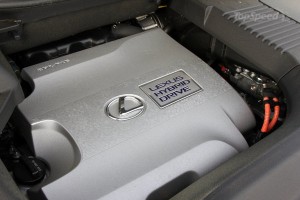
Maybe even triple.
In which case, those who own hybrids will be sitting pretty.
But right now? It gives one pause.
That $8k difference in asking price for the RX450h vs. the RX350 is going to be hard to make up in fuel savings if gas prices don’t go up… dramatically.
So, it’s a bet.
Will gas prices go up?
Or, not?
Lexus is Toyota – and Toyota is to hybrids what Audi is to all-wheel-drive. They have been at it longer than the rest – and (no surprise) are damn good at it.
The RX450h is a brilliant piece of work. The hybrid drivetrain can’t be faulted on functional grounds. In some ways, it’s superior to the gas-only RX350. For example, the hybrid’s ability to operate in what I like to call Stealth Mode. With the gas engine off, you can slink along silently, no sound attending your forward progress except the leaves rustling and the tires rolling (which you’ll only hear if you have the window down).
The gas-engined-only RX350 cannot do that.
It also cannot “idle” without its engine running – and running the electrically powered accessories(which are powered by the engine-driven alternator).
The hybrid RX also feels stronger, even if it’s not actually quicker. Because it launches harder – if you floor it – because it has more torque. Which is what electric motors have in abundance. Off the line (and part-throttle) acceleration is hearty – and easy. The V6-only RX feels as though it’s working harder – which it is. The 3.5 liter engine has less total power – and no back-up.
Which is also why it’s so much thirstier.
Paired to the 450h’s hybridized powertrain is a continuously variable (CVT) automatic – vs. the regular RX’s six-speed conventional automatic. It is more efficient (important in a hybrid) and much smoother, because there are no shifts (gear changes) just linear forward thrust. The harder you push down on the accelerator, the faster you go – like dialing up a rheostat.
Some CVTs make unhappy noises. The RX450h’s almost noiseless. You hear the pleasant – but muted – song of the Lexus 3.5 V6 (one of the finest engines on the market) and that’s all. The gauge cluster’s background lighting shifts from deep blue (most efficient) to background black (red in non-hybrid RXs) when you’re really hauling the mail – but otherwise, there is little indication you’re doing – whoops! – 95 MPH now and climbing.
If you think “hybrid” means “slow” – think again. A high-dollar Prius, this isn’t.
The biggest threat to the RX450h, driving-wise, is probably the Audi Q5 hybrid – which is quicker (0-60 in the mid-high sixes) and feels a bit more nimble. Which it ought to – because it’s smaller and lighter. The Q7 TDI, meanwhile, is a horse… a Budweiser Clydesdale – packing a 406 ft.-lbs. of torque diesel that has so much grunt it feels as though the Q’s front wheels get air when you floor the thing. It is a hoot to drive that beast. But the diesel is pricey ($53k to start) not nearly as fuel efficient (19 city/28 highway) and the Q itself is much larger (and even heavier than the Lexus).
A lesser contender is the Mercedes ML250 BlueTec diesel. It is not nearly as quick, though (about 9 seconds to 60) and its fuel economy (22 city, 29 highway) is also well below that of the Lexus.
What was it Goldilox said about just right?
The RX450h is the only hybrid luxury crossover that’s mid-sized rather than full-sized (Q7, QX60) or compact-sized (Q5) and still mid-priced (unlike the mid-sized Porsche Cayenne hybrid) and delivers the mileage and performance it does.
At 187.8 inches longer overall, it is about half a foot shorter, end to end, than an Infiniti QX60 and a foot shorter, end to end, than an Audi Q7 (200.3) inches but also not as stubby as the Q5 (182.6 inches).
It may not have a third row like the QX60 – but it has much more interior space than the Q5, including 80.3 cubic feet of total cargo capacity vs. 57.3 for the little Q. The smaller Q does have an impressively roomy back seat: 37.4 inches (vs. 36.8 for the Lexus) but that’s a slight difference compared with the cargo difference between the two.
The bigger Q has more room … than the little Q. But still not quite as much as the Lexus (72.5 cubic feet of total cargo space) and slightly less backseat legroom than the little Q (37.1 inches).
The Benz ML is comparable, outside-wise and inside-wise. But it’s diesel engine can’t keep up with the Lexus’ hybrid system – either acceleration-wise or fuel-efficiency-wise.
So far, the RX’s “just right” size (and everything else) has served Lexus exceptionally well.
Given that, it’ll be interesting to see whether the almost-here (and redesigned) 2016 RX will grow a third row. Or sacrifice efficiency to become a little quicker.
The hybrid RX gets a few unique exterior trim bits – including cobalt-blue backlit “hybrid” sill plates and “L” Lexus badges in the grille and on the rear liftgate.
Inside, the hybrid RX also gets its own hybrid-specific gauge package. Instead of a tachometer to the left of the speedometer – as in the standard RX – the hybrid RX has dial gauge with three positions: Charge, ECO and Power. When you’re running electric (including regenerative braking, during deceleration) the needle will show Charge – in blue.
Eco is the transition in-between, as when coasting – or when the gas engine is operating intermittently. You can observe this progress digitally rendered by calling up the “hybrid” display on the LCD in the center stack, too.
Beyond the special gauge package, the hybrid RX is laid out exactly like the regular RX.
This includes the ergonomically designed mouse/trackpad input on the console. It is shaped to fit the natural curve of the human hand. Your digits operate the little toggle switch located toward the front of the unit, to highlight whatever function you’d like to access – such as satellite radio, apps or the GPs.
Then push to select.
It’s one of the best such system out there.
There is also a CD slot – an interesting retro touch but not surprising given the current RX is a few years old. Still, there are people who have CDs and don’t use Bluetooth or Pandora.
They will appreciate the slot.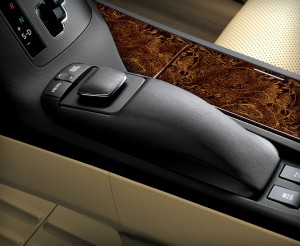
Other mention-worthy design features include standard sliding and reclining second row seats, standard Siri Eyes Free voice-connect and (optional) a smog-sensing automatic air recirculation feature. A top-drawer (and 15 speaker) Mark Levinson audi rig is also available optionally.
A handy (and uncommon) design touch is an additional cupholder built into the dashboard to the left of the steering wheel for the driver’s use.
THE REST
One RX weak point – relative to its sort-of (because so much more pricey or otherwise compromised) competition is towing capacity. The RX hybrid can only pull up to 3,500 lbs. – in the same range as several mid-sized cars and on the light side for a mid-sized crossover SUV.
The Porsche Cayenne hybrid, on the other hand, can pull an impressive 7,716 lbs. – comparable to mid-sized, truck-based SUVs with V8 engines.
Ditto the diesel Benz ML250, which can haul 7,200 lbs.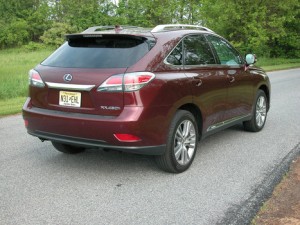
But it’s an apples-oranges comparison. The Benz is slower and less fuel-efficient – and the Porsche is much more expensive (and far less fuel-efficient).
THE BOTTOM LINE
It’s still got mojo – but it’s biggest problem isn’t what it does so well.
It’s how cheap gas has become.
If you value independent media, please support independent media. We depend on you to keep the wheels turning!
Our donate button is here.
If you prefer to avoid PayPal, our mailing address is:
EPautos
721 Hummingbird Lane SE
Copper Hill, VA 24079
PS: EPautos stickers are free to those who sign up for a $5 or more monthly recurring donation to support EPautos, or for a one-time donation of $10 or more. (Please be sure to tell us you want a sticker – and also, provide an address, so we know where to mail the thing!)




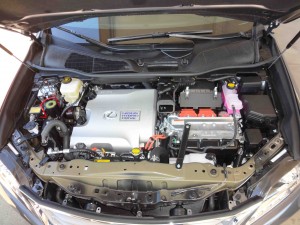
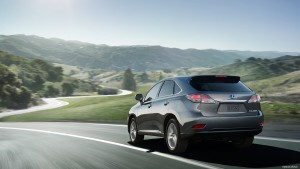
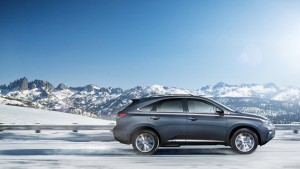
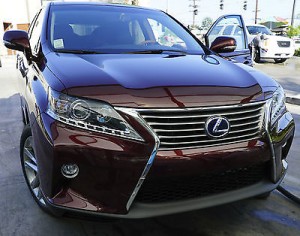








One variable that is rarely factored into most hybrid cost/benefit ratios……the fact that gas prices “could” go much higher than the $4 to $5 per gallon that is usually projected.
If gas goes to $7 per gallon….or higher….that cost benefit ratio is going to look A LOT more attractive.
Perhaps it’s not probable the price will go that high during the hybrid ownership period. But it’s a real possibility: my guess is around a 15 to 25% chance.
So hybrids can be a hedge against skyrocketing fuel costs. That has some value too.
Very true, Mike.
It’s a gamble – and could go either way.
Now, that said, I consider luxury hybrids a contradiction in terms.
The RX I tested stickered out for about $55k. If you can afford that, the cost of fuel is an irrelevance.
A $24k Prius (and more so, the $20k Prius C ) makes sense to me.
A $55k RX450h doesn’t.
Even if gas prices DOUBLE to around $4 per gallon, and stay there for the entire time you own this vehicle, it’ll take over 100K miles to recover the extra cost — during which time you’ll also be losing out on the use of $8K and dealing with a slower vehicle.
If gas prices stay around $2 per gallon, we’re talking about over 200K miles to recover that “investment”.
It’s just a bad choice, unless you derive satisfaction from driving an electric vehicle because you’re bad at math or logic or the ability to understand that these vehicles might actually cause net harm to the environment compared to a standard Lexus.
Even diesel in my area has come down to $2.29 at at least a few stations, about the same as mid-grade gasoline. Wasn’t that long ago it was as high or higher than premium.
Hi Jim,
You are correct, sir!
Every time I’ve done the math on hybrid vs. non hybrid of the same vehicle the time to pay back the premium is beyond what any normal person calls end of useful life.
I’ve had one as a service loaner.
Given that I prefer the “Utility” portion of the SUV name, the exterior is sort of girlish. And that’s because of the sloping back roofline. I get why they did it (fuel economy) but you just can’t carry as much back there. Give me boxy SUVs like the outgoing Mercedes GLK.
The interior is very nice – only complaint is that the central part of the dash is too “swoopy”. No question that’s it’s high-quality – everywhere you touch is soft material. The switches are mostly where you expect them and are crisp.
The Lexus “Car Mouse” is the best way to control the nav system thus far. No messy fingerprints on the screen, no leaning over with your arm blocking the view. You just reach forward from the armrest and the mouse is there. It’s haptic feedback means that you can feel where it’s pointing.
It drives … ok. They went for sporty handling (low-profile tires, stiff spring rates, etc) and I think that’s a mistake on both a luxury car and an SUV. The handling shouldn’t be floppy (oh no!) but it shouldn’t be jarring either, and IMO it’s approaching that.
chiph, I really doubt that sloped shape saves fuel. It came about by a new, novel look from one manufacturer(Chrysler I believe it was) and then everybody got on board. I can remember when certain cars had the rear boxed to improve slip. I’ve not seen a mouse but I have come to appreciate steering wheel controls for as much as they can put there. Reaching over to find anything has caused what I’d guess is millions of wrecks. I know several people who ran into something on the side of the road reaching for a cigarette lighter. They finally had to look to return it(mainly, the return)to its socket. Backlighting the unit helped this, Bic lighters probably did more to alleviate it than anything else except fewer people smoking. HUD gauges were invented in the 50’s and worked well in the 60’s. Why in hell they’re not an option today is anyone’s guess.
Keeping your hands on the wheel and your eyes on the road has probably helped more than anything hence the line showing ZZ Top was safety minded when the driver said “Pass me up another brew boys”. I hate to have to reach into the cooler, grab one and find the churchkey and then open it when somebody else could do it all and not be a bit distracted. I prefer to have a cold one simply placed into my open hand. Now that’s safety in action.
That’s the very reason passing one was always right to left since the front seat passenger could easily place a J or pipe in the drivers hand without him having to take his eyes from the road. And the driver could simply extend his hand above his shoulder for the back seat rider to take. Safety first…..for the chilluns.
I also prefer two way radios on top of the dash slanted up instead of overhead. Volvo does a nice job of this although I prefer Peterbilt light controls nearest the drivers right hand(Volvo is good at this too). For momentary switches, I even like top of the dash left hand switches since they’re the only ones in that position. Every one of these switches should be lighted too. Just enough light for determining momentary on/off for head lamps and running lights. All the other switches should be back lit also with a light for on/off in the switch or under it.
I’ve hit the switch for Engine Over-ride or Fan Over-ride too many times at night when I was reaching for the jake brake or cruise control. If they’d only let me design dashes truckers would be cheering everywhere. And don’t put the damned boost gauge or pyrometer behind the steering wheel on one side. If you can’t put a gauge inside the steering wheel then place it well to the side, diff and transmission heat to one side, boost and pyro to the other and oil and water in the center. A speedo readout in digital above the wheel and the tach somewhere right in the center. Air pressure cab and trailer above the wheel with application beside it and fuel pressure close to boost and pyro. It’s nice to know brake application pressure but not all the time. It’s easy to “feel” that. And that dash full of warning lights would be better served beside each gauge…..like the good old days when they didn’t mind spending a few cents to let you know instead of a bunch of vague crap all jammed together so you have to focus on the whole gamutca and try to see which one is on. Same for diff lock with a light(red) right beside the switch and the fifth wheel too. In fact, a red light or even flashing light for diff lock and maybe a beeper for it after it had been on for more than 15 minutes. Air bag in a line up and down with diff lock and fifth wheel with its own light too. Location, location, location.
The funny part — if you lay the outline of the RX over top of the Pontiac Aztek, that rear sloping roofline is almost a perfect match.